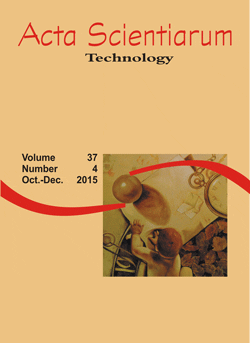<b>Is the Conditional Density Network more suitable than the Maximum likelihood for fitting the Generalized Extreme Value Distribution?
DOI:
https://doi.org/10.4025/actascitechnol.v37i4.27660Keywords:
neural network, sample size, extreme precipitation.Abstract
The Generalized Extreme value Distribution (GEV) has been widely used to assess the probability of extreme weather events and the parameter estimation method is a key factor for improving its quantile estimates. On such background, this study aimed to indicate under which conditions (sample size and tail behavior) the Conditional Density Network (CDN) leads to better GEV quantile estimates than the widely used Maximum likelihood method (MLE) does. With Monte Carlo simulations and rainfall series of several Brazilians regions, we highlight the following results: the return period and the tail behavior of the GEV (specified by the shape parameter) are two of the main factors affecting the quantile estimates. For -0.1 ≤ shape ≤ 0.1 and sample size ≤ 50, the CDN outperformed the MLE. For shape ≥ 0.20 the CDN outperformed the MLE for all sample sizes (30-90). The results also suggested that the CDN is more suitable than the MLE for fitting the GEV parameter to the Brazilian extreme rainfall series. We conclude that when the shape parameter are equal to or greater than -0.1 the CDN should be preferred over the MLE.
Â
Downloads
Downloads
Published
How to Cite
Issue
Section
License
DECLARATION OF ORIGINALITY AND COPYRIGHTS
I Declare that current article is original and has not been submitted for publication, in part or in whole, to any other national or international journal.
The copyrights belong exclusively to the authors. Published content is licensed under Creative Commons Attribution 4.0 (CC BY 4.0) guidelines, which allows sharing (copy and distribution of the material in any medium or format) and adaptation (remix, transform, and build upon the material) for any purpose, even commercially, under the terms of attribution.
Read this link for further information on how to use CC BY 4.0 properly.











8.png)




